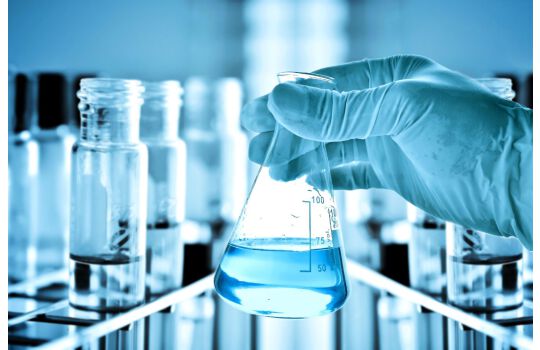Diethylene glycol (DEG) is an organic compound with the formula (HOCH2CH2)2O. It is a colorless, practically odorless, poisonous, and hygroscopic liquid with a sweetish taste. It is miscible in water, alcohol, ether, acetone, and ethylene glycol.DEG is a widely used solvent. It can be a contaminant in consumer products; this has resulted in numerous epidemics of poisoning since the early 20th century.
Preparation
DEG is produced by the partial hydrolysis of ethylene oxide. Depending on the conditions, varying amounts of DEG and related glycols are produced. The resulting product is two ethylene glycol molecules joined by an ether bond.
"Diethylene glycol is derived as a co-product with ethylene glycol (MEG) and triethylene glycol. The industry generally operates to maximize MEG production. Ethylene glycol is by far the largest volume of the glycol products in a variety of applications. Availability of DEG will depend on demand for derivatives of the primary product, ethylene glycol, rather than on DEG market requirements."
Structure of DEG and related polyols
Diethylene glycol is one of several glycols derived from ethylene oxide. Glycols related to and coproduced with diethylene glycol and have the formula HOCH2CH2(OCH2CH2)nOH are:
n = 0 ethylene glycol ("antifreeze"); monoethylene glycol MEG
n = 1 DEG
n = 2 triethylene glycol, TEG, or triglycol
n = 3 tetraethylene glycol
n = 4 pentaethylene glycol
n > 4 polyethylene glycol
These compounds are all hydrophilic, more so than most diols, by virtue of the ether functionality.


